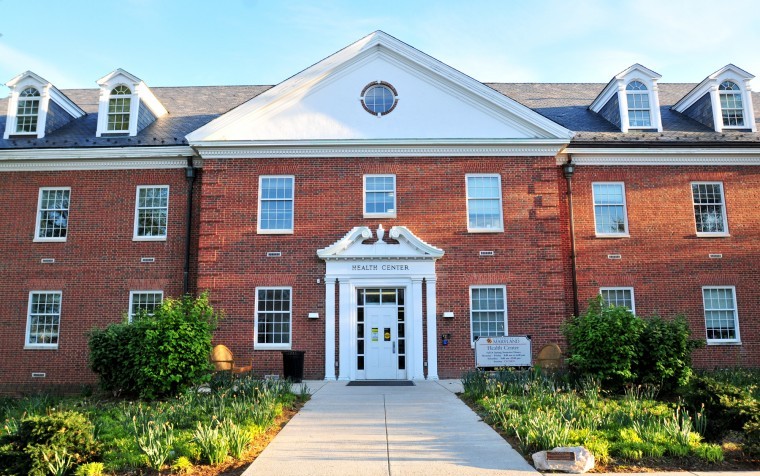Views expressed in opinion columns are the author’s own.
Once again, the University of Maryland has found itself in the national spotlight for all the wrong reasons. It recently received national attention for the deaths of Jordan McNair and 2nd Lt. Richard Collins, abuse in its football program and the advertisements of a counseling group that described it as a “safe space for White students.” This time, on May 16, the Washington Post published a damning article detailing the university’s lack of transparency and poor response surrounding the outbreak of adenovirus on the campus, which endangered immunocompromised students like freshman Olivia Paregol last year.
Shortly after the piece came out, university President Wallace Loh sent out a campuswide email. The subject of the email was “Washington Post story today,” and it included some information from the article. But to anyone who actually read what the Post published, the response was wildly incongruous given the evidence being brought against the school. Though this university has had no shortage of opportunities to practice its response to bad publicity, it can’t seem to get it right — and Loh’s email is another tone-deaf defense of this university at a time when real action is needed.
Before getting into just how bad Loh’s response was, let’s review what the Post’s article revealed. Paregol had Crohn’s disease and took medication for it that weakened her immune system, which was likely already not performing well with the proliferation of rampant mold in her dorm, Elkton Hall. She was sick throughout the semester and went to the University Health Center multiple times. When her symptoms continued to worsen, she went home, where she was treated at a local hospital and was later transferred to Johns Hopkins Hospital.
Paregol’s family and her doctors weren’t told to test for adenovirus until 12 days after the health center was made aware of a potential outbreak at the university. The Paregols were kept in the dark, and the university declined to make an announcement to other students who were at risk of complications from adenovirus, including those with other health conditions or the students exposed to mold. Paregol wasn’t being treated for a virus in the hospital until her father called the director of the health center to demand answers and was informed of the outbreak — but at that point, it was too late. Five days after that call, she died.
Loh’s response was intentionally misleading. His first sentence reads, “Today, the Washington Post published a story about the death of Olivia Paregol, a first-year student who died on November 18, 2018.” More than just a story about the death of a student, it was an in-depth investigation into the university’s mishandling of the situation, as is immediately evident right below the headline of the story: “The University of Maryland waited 18 days to inform students of a virus on campus. That decision left vulnerable students like Olivia Paregol in the dark.”
The email continues in similar fashion, whitewashing the story and offering empty assurances about the school’s actions with weak, cherry-picked support from the piece. He wrote that he continues to think about Paregol’s family — which is now taking steps to sue this university for its response to the adenovirus outbreak and mold on the campus.
There’s not a single explicit reference to the crux of the Post’s story: the connection between the university’s decision not to release information about reported cases of adenovirus and the escalation of Paregol’s illness. Instead, Loh simply writes, “We are confident that our actions last fall were appropriate and timely,” choosing only to vaguely allude to the troubling evidence the story provided.
This university’s suffocating PR and its efforts to defend itself against criticism have only made it look worse. Even when the Post was in the process of writing the story, officials remained staunchly nontransparent and uncooperative; they declined to give the Post a fee waiver for documents regarding the story and estimated it would cost more than $63,000 for the requested materials.
Responses like Loh’s intentionally mislead students about controversies at this university and undermine the administration’s credibility. They give the impression that the administration is not at all equipped to do more than vehemently defend itself — it seems incapable of sober reflection or real change. When the university president writes an email addressing a highly critical story in the national media as if it offered nothing but praise for the university’s practices, it’s no wonder that students regard its marketing as a joke and generally distrust the administration.
And this isn’t an isolated incident of brushing aside serious criticism and misleading students in the process. Maryland Today, the newsletter produced by the university’s Office of Strategic Communications, once included in a story that Jordan McNair simply “struggled to recover from a spring workout” and later died, rather than mention that athletic staff failed to properly treat him.
If it actually wants trust and approval from its community, this university needs to be honest with its students and tone down its endless stream of PR. The administration should be concerned with genuinely addressing its issues, not relentlessly defending itself with public relations fluff.
Zachary Jablow, opinion editor, is a rising junior economics and government and politics major. He can be reached at zachjablow@gmail.com.



